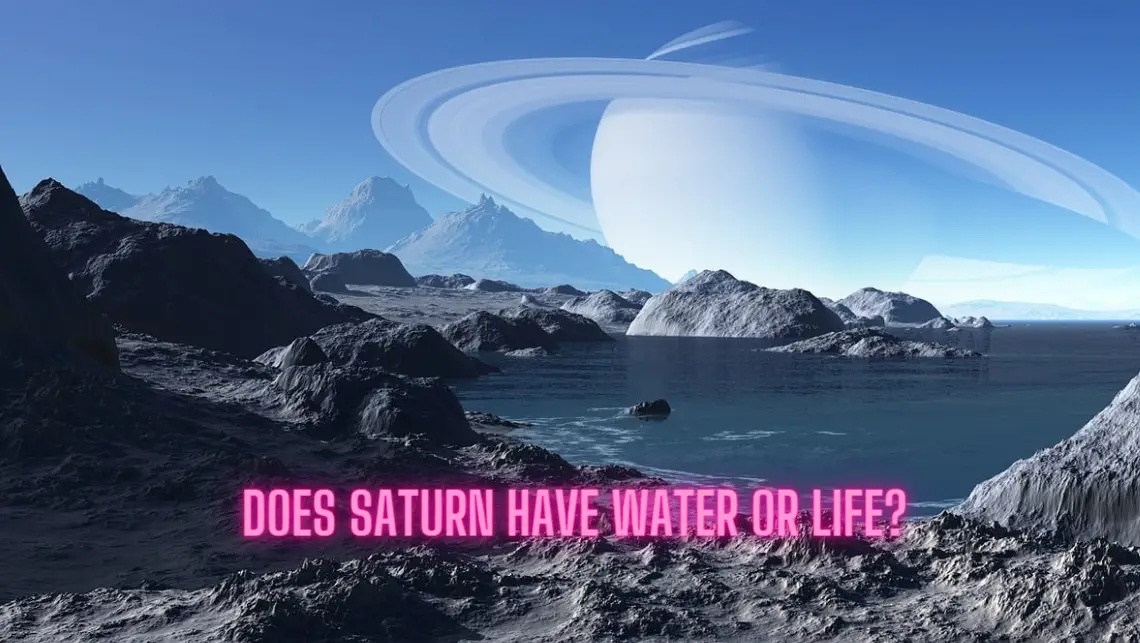Since ancient times, the majestic gas giant Saturn has had a special place in the human imagination. Because of its breathtaking rings and roiling storms, Saturn is one of the most notable aspects of our solar system. Although Saturn is primarily made up of hydrogen and helium, the subject of whether or not it has water or is home to life has long fascinated both scientists and space fans alike. Let’s go deeper into this incredibly interesting issue and investigate what we already know about it.
The universe is filled with water, which is a prerequisite for all known forms of life and can be found everywhere. It has been found on multiple celestial bodies, such as planets, moons, and even comets, and can be found in a variety of states, including a vaporous state, a frozen one, and a liquid state. When it comes to Saturn, on the other hand, determining the presence of water is not quite as cut and dry.
Saturn, in contrast to Earth, does not have a solid surface; rather, the vast majority of its mass is made up of gas. It does in fact possess an atmosphere, the primary components of which are hydrogen and helium, with traces of a variety of other gases also present. Even though water vapor has been found in Saturn’s atmosphere, the circumstances on the planet do not allow for considerable amounts of liquid water to exist anywhere on the surface of the planet. Because of the high pressures and temperatures that exist deep below Saturn’s atmosphere, it is highly unlikely that liquid water could ever develop there.
In spite of this, Saturn’s moons are a more intriguing option than any of the others. Enceladus and Titan, two of Saturn’s most notable moons, have aroused a tremendous deal of interest and conjecture regarding the availability of water and the possibility of life on their respective surfaces.
The ice moon Enceladus, which is relatively small, has been the subject of extensive research during the past few years. The Cassini spacecraft made the discovery in 2005 that the south pole of Enceladus is home to a number of active geysers. Water vapor, in addition to a variety of organic chemicals including hydrocarbons, can be found within these geysers. The subsequent studies made by the Cassini spacecraft demonstrated the presence of a vast subsurface ocean beneath the frozen crust of Enceladus. It is thought that this ocean has direct touch with the rocky interior of the moon, which would make it an ideal environment for the existence of microorganisms.
Titan, Saturn’s largest moon, has also piqued the curiosity of researchers in recent years. It has a dense atmosphere that is abundant in nitrogen and also contains trace amounts of methane and other hydrocarbons. In 2017, the Cassini spacecraft discovered that Titan’s atmosphere contains a variety of complex organic compounds. On the surface of the moon, there are lakes and seas that are filled with liquid hydrocarbons such as methane and ethane. These bodies of water have the potential to act as an alternate solvent for life.
Even if these discoveries open up exciting possibilities, it is essential to keep in mind that the simple presence of water does not necessarily indicate the presence of life on a planet. According to our current understanding, in order for there to be life, a number of conditions must first be met. These conditions include the availability of organic molecules and sources of energy, as well as the presence of liquid water.
An ongoing undertaking is the investigation of the possibility of life on Saturn’s moons and other solar system bodies. Future expeditions, such as NASA’s forthcoming Europa Clipper mission to Jupiter’s moon Europa, which will be outfitted with sensors that are able to identify indications of life, may provide new insights into the chances of life existing beyond Earth.
Even though Saturn itself might not have the conditions necessary for liquid water or life, the planet’s moons, in particular Enceladus and Titan, present some fascinating possibilities. The discovery of water vapor, underground oceans, and complex organic molecules on these moons has fueled scientific curiosity and suggests that they may provide settings that are appropriate for the presence of life, whether in the form of microorganisms or other kinds of extraterrestrial species. Our knowledge of the universe continues to grow, and with it, so does our interest in solving the riddles of other worlds and determining whether or not there is the possibility of life elsewhere in the cosmos.
![]()
